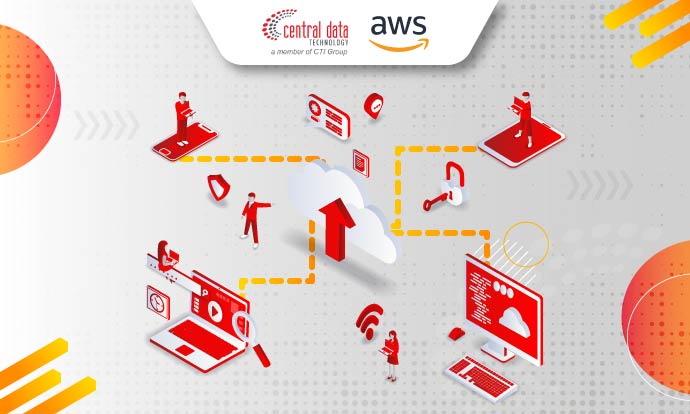
Have you ever wondered how you can run a website or application without having to worry less about managing servers? With serverless computing technology, all of these things can become a reality.
In short, even though the linguistic meaning of “serverless” is without servers, in reality, serverless technology still relies on servers. The difference is that the server is managed by another cloud provider, and you only need to use it without going through a complicated setup process. So, what exactly is serverless computing? For complete details, see the following article.
What is Serverless Computing?

According to AWS, serverless computing is a technology that allows you to build and run applications or websites without having to think about how to operate a server.
Apart from that, the advantage of serverless computing is in terms of cost. You will only be charged for the resources you use, without having to pay a subscription fee up front.
This serverless technology is very suitable for those of you who want to save costs and don’t want to bother thinking about maintaining the server. In this way, serverless computing can be compared to cPanel hosting. This means you only need to code then upload the source code and database.
How Serverless Computing Works?
In traditional non-serverless systems, services typically require a server or virtual machine to run applications. This differs from serverless computing, where the service provides a high level of abstraction. These abstractions vary depending on the type of script or instruction being executed and the trigger. For example, in a database system, the abstraction is a table, and the trigger is a query against that table.
Another example of implementing serverless computing is in mobile games. For instance, if a game has a feature to display high scores from players worldwide, the system will call an API. This API will trigger serverless computing functions on data streams from the database, and the data will be sent to the user in object form, such as a list of top scores.
What are the Benefits of Serverless Computing?

When developing an application or website, of course you have to manage the server where the program can run and be used by users. Apart from that, in managing the server you also have to think about scalability, availability, security, etc. so that the programs you build can still be used by users.
However, this often becomes an obstacle for IT teams who are building programs, because IT teams usually only focus on writing code and don’t want to dwell on things that are included in undifferentiated heavy lifting.
So, to answer this problem, serverless computing could be the right solution! So, what are the benefits of serverless computing? Here are the three main benefits provided to developers:
1. Better Task Management
Serverless computing allows developers hassle-free when managing infrastructure. This will give them more time to focus on other important things, such as optimizing tasks, innovation, improving skills and their business.
2. Reduce Costs
In general, serverless computing is a more affordable option. Conventional backend services offered by cloud providers often make users pay for unused space. Serverless computing, in short, allows developers to only pay for what they use.
3. Simpler
Serverless computing means developers don’t need to worry about how to improve code. The cloud provider will handle all the scaling on demand. Serverless computing also simplifies backend code with FaaS, so developers can create simple functions such as APIs easily and quickly.
After understanding about the meaning, how it works, and the benefits of serverless computing. So, for those of you who are interested in using serverless computing solutions, you can use the best product in its class, namely AWS Lambda. AWS Lambda is a serverless computing platform that allows us to run code without having to create or manage servers.
AWS Lambda as the Best Serverless Computing Service Provider in its Class
AWS Lambda is one of the most popular serverless services and is used by many developers around the world. AWS Lambda allows you to run program code when certain events occur (event-driven) that originate from other AWS services.
For example, when there is an HTTP request to an API gateway endpoint, a new object or file is added to an Amazon S3 bucket, you can immediately write and upload program code in a supported programming language to AWS Lambda.
In addition, AWS Lambda also allows you to run code without needing to provision or manage servers. Lambda runs your code on a high-availability computing infrastructure and performs all computing resource administration, including server and operating system maintenance, capacity provisioning and autoscaling, and code logging.
On the other hand, AWS Lambda can only run when needed, so you only pay for the compute time you use and there are no charges when your code is not running.
What are the Features of AWS Lambda?
What are the Features of AWS Lambda?
Extend AWS Services
Enables you to add custom logs to AWS resources such as Amazon S3 buckets and Amazon DynamoDB, so you can easily deploy compute as data comes in or moves through the cloud.
Build Custom Backend Services
Can create new backend application services on request using Lambda APIs or custom API endpoints built using Amazon API Gateway.
Create Your Own Code
Lambda natively supports Java, Go, PowerShell, Node.js, C#, Python, and Ruby code, and provides a Runtime API that allows you to use any additional programming language to write code.
Fully Automated Administration
Code seamlessly, handles all administration, maintenance, and security patches, and provides built-in logging and monitoring through Amazon CloudWatch.
AWS Lambda Implementation Example
Since its launch in 2014, the AWS Lambda service has spread rapidly among developers and cloud architects, because it is easy to use, and there are significant cost benefits (pay per use). Some examples of using AWS Lambda in companies include the following.
Operating a Website Without a Server
You can host a Lambda database in a VPC to isolate it from the rest of the network. For Lambda, API Gateway, and S3, you only pay once the traffic occurs, the only fixed cost is running the database service.
Security Warning
You can write code in Lambda to send alerts on specific events from AWS CloudWatch or CloudTrail activity logs. This will notify designated on-call staff via email, or you can even write code to provide security notifications on your phone.
Mass Email Using AWS Lambda & SES
AWS Lambda and Simple Email Service (SES), enable you to build a cost-effective, internal serverless email platform that can quickly send HTML or text-based emails to a large number of recipients.
Using AWS Lambda for Monitoring
The CloudWatch Event feature allows you to monitor and track any anomalies, so you can reprogram logs to a database for backup or stop AWS systems when resources are underperforming.
AWS Lambda for Building Serverless Chatbots
Building and running a chatbot is not only time consuming but also expensive. Developers must provision, run, and scale the infrastructure resources that run the chatbot code. However, with AWS Lambda you can run a scalable chatbot architecture and pay only for the time your code runs.
Read More: Cloud Native, the Key to Making and Managing Applications Easy
CDT as AWS Certified Advanced Consulting Partner
It’s time to use AWS Lambda solutions for deploying serverless computing in AWS cloud environments without overhead. This solution will save you a lot of time and resources when coding tasks for websites, applications, and services running on AWS.
CDT as an official AWS value-added distributor will help your business utilize the AWS Lambda solution from the consultation, migration, implementation, to maintenance stages. CDT’s professional and certified IT team will help resolve technical issues 24/7. For more detailed information, contact us by clicking here.
Translation: Ary Adianto
CTI Group Content Writers

